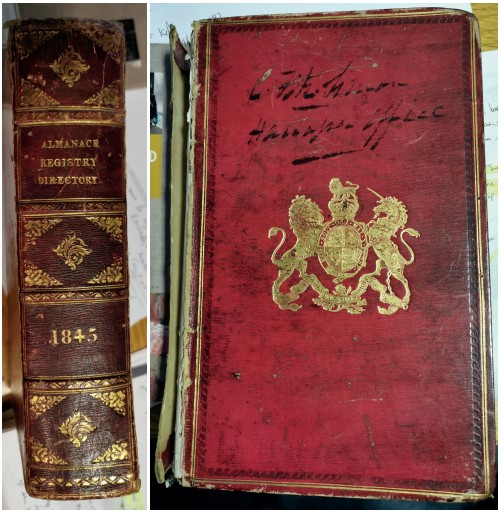Directories as a source for family history
Published in Issue 2 (March/April 2021), Volume 29By Fiona Fitzsimons
Directories were first widely published in the 1730s, as new print formats were developed for a popular audience. They were urban handbooks ‘bundled up’ with other reference works—almanacks, gazetteers and companions—that published basic but essential information: calendars for planting crops; dates of fairs and markets; schedules of assize courts; distances by road; timetables; tidetables; maps; postal rates and services; tolls and customs; and official printed lists (army and navy, government officials, judges, etc.).
Directories added something new to the mix. They included the names and addresses of the main inhabitants of a town or city, their status and occupation. The information was concise and presented in a structured format, so that it could be read across the spectrum of literacy. Some included street directories, as well as professional and trade classification listings. They were aimed squarely at a readership of residents and visitors who wanted to find their way around town and to locate local people and businesses.

Above: The Dublin Almanac, and General Register of Ireland, 1845 (Pettigrew & Oulton).
Publishers compiled information for inclusion by direct survey, through responses to local ads or through plagiarism of previously published works. Consequently, directories were never completely current, and there was always a ‘time-lag’ of about twelve months.
In Ireland the first commercial directory, Wilson’s, was published for Dublin in 1752, as a supplement to Watson’s Gentleman’s and Citizen’s Almanack (first published in 1729, then annually from 1733). Lucas’ General Directory of the Kingdom of Ireland (1788) implied countrywide coverage but was in fact limited to Cork and other towns of Munster and Leinster. By the early nineteenth century the sale of directories was a lucrative business, and big companies competed for market share. Pigot’s Commercial Directory of Ireland (1820) was the first to provide nationwide coverage, succeeded by Slater’s National Commercial Directory (1846), both from English companies.
Directories are a good source for family and local history, with several caveats. In the first instance, they were published as a locational aid, not as a census. They don’t include tenement-dwellers, servants or—in the countryside—tenant farmers and landless labourers. On the other hand, we can use directories to search for people using more than one criterion: name and status; occupation or trade; street address (including suburbs and townlands). As a source they lend themselves to other fields of historical inquiry—you will find some information on women’s employment, for example—and are a good source for urban development, the layout of streets and suburbs, and the numbering of buildings.
The largest online collection of Irish directories is on findmypast.com. The most significant hard-copy collections are in the Gilbert Library, Pearse Street, and in the Old Library in Trinity College, Dublin.
Fiona Fitzsimons is director of Enneclan, a Trinity campus company, and of findmypast Ireland.
















